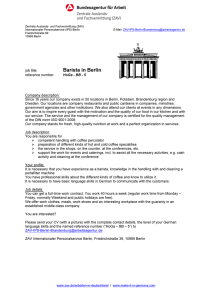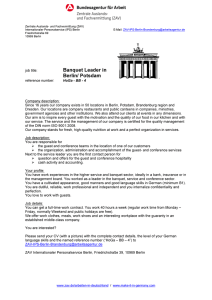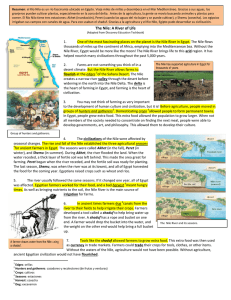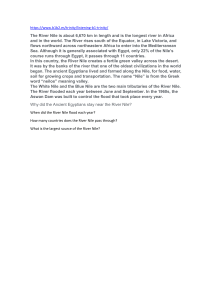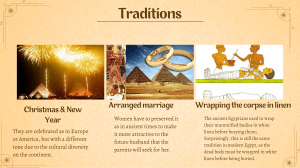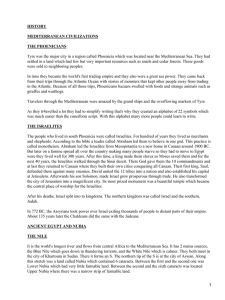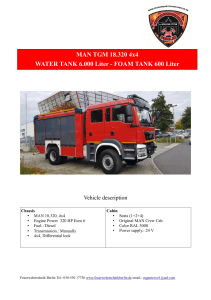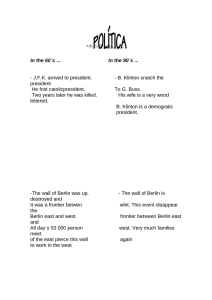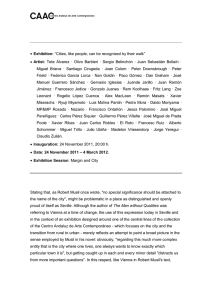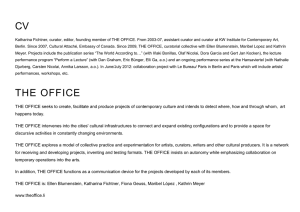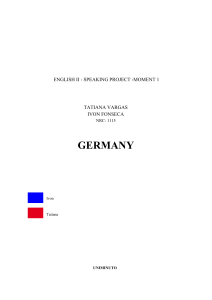Berlin, April 20, 2016 PRESS RELEASE Staatliche Museen zu
Anuncio
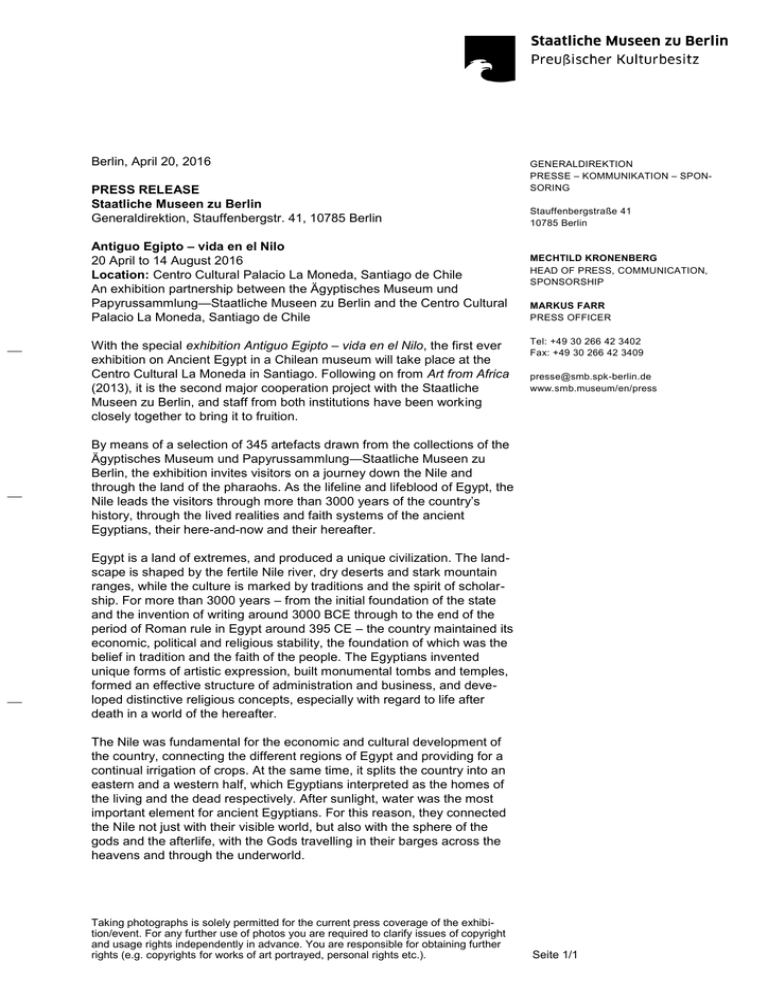
Berlin, April 20, 2016 PRESS RELEASE Staatliche Museen zu Berlin Generaldirektion, Stauffenbergstr. 41, 10785 Berlin Antiguo Egipto – vida en el Nilo 20 April to 14 August 2016 Location: Centro Cultural Palacio La Moneda, Santiago de Chile An exhibition partnership between the Ägyptisches Museum und Papyrussammlung—Staatliche Museen zu Berlin and the Centro Cultural Palacio La Moneda, Santiago de Chile With the special exhibition Antiguo Egipto – vida en el Nilo, the first ever exhibition on Ancient Egypt in a Chilean museum will take place at the Centro Cultural La Moneda in Santiago. Following on from Art from Africa (2013), it is the second major cooperation project with the Staatliche Museen zu Berlin, and staff from both institutions have been working closely together to bring it to fruition. GENERALDIREKTION PRESSE – KOMMUNIKATION – SPONSORING Stauffenbergstraße 41 10785 Berlin MECHTILD KRONENBERG HEAD OF PRESS, COMMUNICATION, SPONSORSHIP MARKUS FARR PRESS OFFICER Tel: +49 30 266 42 3402 Fax: +49 30 266 42 3409 [email protected] www.smb.museum/en/press By means of a selection of 345 artefacts drawn from the collections of the Ägyptisches Museum und Papyrussammlung—Staatliche Museen zu Berlin, the exhibition invites visitors on a journey down the Nile and through the land of the pharaohs. As the lifeline and lifeblood of Egypt, the Nile leads the visitors through more than 3000 years of the country’s history, through the lived realities and faith systems of the ancient Egyptians, their here-and-now and their hereafter. Egypt is a land of extremes, and produced a unique civilization. The landscape is shaped by the fertile Nile river, dry deserts and stark mountain ranges, while the culture is marked by traditions and the spirit of scholarship. For more than 3000 years – from the initial foundation of the state and the invention of writing around 3000 BCE through to the end of the period of Roman rule in Egypt around 395 CE – the country maintained its economic, political and religious stability, the foundation of which was the belief in tradition and the faith of the people. The Egyptians invented unique forms of artistic expression, built monumental tombs and temples, formed an effective structure of administration and business, and developed distinctive religious concepts, especially with regard to life after death in a world of the hereafter. The Nile was fundamental for the economic and cultural development of the country, connecting the different regions of Egypt and providing for a continual irrigation of crops. At the same time, it splits the country into an eastern and a western half, which Egyptians interpreted as the homes of the living and the dead respectively. After sunlight, water was the most important element for ancient Egyptians. For this reason, they connected the Nile not just with their visible world, but also with the sphere of the gods and the afterlife, with the Gods travelling in their barges across the heavens and through the underworld. Taking photographs is solely permitted for the current press coverage of the exhibition/event. For any further use of photos you are required to clarify issues of copyright and usage rights independently in advance. You are responsible for obtaining further rights (e.g. copyrights for works of art portrayed, personal rights etc.). Seite 1/1
